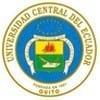Explore all the information on
Poultry egg quality
Egg quality defines those characteristics of an egg that affect consumer acceptability and preference. Components of quality include shell quality and interior egg quality for shell eggs, and interior egg quality for further processed eggs. The quality of the egg once it is laid cannot be improved. Hence, its maintenance is mostly a preventive process. Egg quality is influenced by several factors including rearing, temperature, humidity, handling, storage, and egg age. Shell quality: There are five major classes of shell defects: integrity, texture, shape, color, and cleanliness. Internal egg quality involves functional, aesthetic and microbiological properties of the egg yolk and albumen. The proportions of components for fresh egg are 32% yolk, 58% albumen and 10% shell. Regarding exterior egg quality, the shell of each egg should be smooth, clean and free of cracks. The eggs should be uniform in colour, size and shape.
Infectious bronchitis live vaccine is given recommended right or wrong at the stage of laying birds(Age 25 wks above any situation). Have any harmful effects on egg production????...
Comments : 0
Recommendations: 0
Dermanyssus gallinae (also known as red mite or poultry mite) is an ectoparasite of poultry that feeds on the blood of the animal. It causes itching, general discomfort, stress, anemia, fatigue, feather pecking, cannibalism and sometimes death. In laying hens, it worsens feed conversion, reduces the laying rate and impairs egg quality (eggs show pale yolks and fragile shells; eggs may be covered by mites or blood stains)....
Comments : 0
Recommendations: 3
A success case in a breeding farm proved that the use of PlusProtect Digestive© and PhytoMax© can significantly improve productive parameters such as laying rate, FCR, egg quality, egg mass and percentage of qualified eggs. OUTLINE OF THE CASE Animals:...
Comments : 0
Recommendations: 0
Introduction Use of the antibiotics in feed has shown several side effects like resistance towards the drug, residue in the meat and thereby the user getting resistance to the drug etc. hence several countries have banned the use of antibiotic based growth promoters in the feed animal sector and appearance of resistant strains in human beings. Alternative plant extracts and essential oils have been known to be used for many kinds of diseases by Egyptians, Chinese, Indians and...
Comments : 0
Recommendations: 0


Effective Solutions for Preventing and Treating CRD in Poultry with Natural and Conventional Approaches
Suggested link
Due to the world’s population increase, egg production is expected to develop rapidly and, to increase egg production, the goal is to enhance laying persistency while maintaining egg quality (Bain et al., 2016). As they age, laying hens gradually decrease productivity and eggshell quality (Dunn, 2013). Oxidative stress is an important factor of ageing and selenium (Se), being an essential mineral involved in several antioxidant processes, can play an important role influencing both...
Comments : 0
Recommendations: 1
Traditionally, Zn, Cu and Mn have been added to poultry diets in the form of inorganic salts, such as sulphate, to meet requirements and prevent deficiencies. The sulphate sources of trace minerals have low bioavailability, are highly water soluble and reactive in the feed and digestive tract (Ma et al., 2011). Hydroxychloride minerals (HyC) are a class of naturally occurring minerals with fully defined crystalline structure, where the crystal is held together by a series of covalent bonds...
Comments : 0
Recommendations: 0


A Natural Choice for Growth Enhancement in Farm Animals - 3 ESSDENDIS
Suggested link
I. INTRODUCTION Feed efficiency (FE) is an important production trait in poultry. A commonly used measure of efficiency is feed conversion ratio (FCR), which is defined as feed intake (FI) per unit of egg mass (EM) in laying hens. It is widely recognised that behaviour is an important aspect of the physiological status of animals (Pennisi, 2005). Feeding behaviour may reflect animal meal habit as a potential predictor of FE (Schwartzkopf-Genswein, 2002). With the help of...
Comments : 0
Recommendations: 1
1. Introduction The welfare of laying hens has been the subject of interest in consumers, industry, and the government in Chile. The current main egg production system in Chile is the intensive cage system [1], allowing high egg production (3.9 thousand million in 2019) for an increasing human population. Joint efforts have been carried out between the industry, universities, and the government to establish minimum welfare conditions, including the development of the Good...
Comments : 0
Recommendations: 0
Introduction The application of sub-therapeutic doses of growth-promoting antibiotics (GPAs) in the poultry industry has allowed the development rate and production yield of the birds to be increased while preventing infections [1] by changing their intestinal microbiota, metabolism, and intestinal function [2]. Feeding is a particularly important factor in commercial poultry farming as it represents approximately 70% of the total cost of production, which has led to increased...
Comments : 0
Recommendations: 0
Introduction Salmonellosis is one of the major foodborne diseases in developed countries [1]. It is known to be closely related to the consumption of contaminated food of animal origin, including eggs and poultry meat [2,3]. Salmonella enteritidis phage type 6 (PT6) is suspected to be the cause of epidemics of foodborne diseases in many countries [4]. Other severe outbreaks of S. enteritidis PT1 infection have been observed [5]. Salmonella typhimurium, a redoubtable pathogen,...
Comments : 2
Recommendations: 0


Digestible lysine requirements of male broilers from 1 to 42 days of age reassessed
Suggested link
The International Egg Commission (IEC) and International Poultry Council (IPC) have signed a renewed Memorandum of Understanding (MOU) to strengthen their longstanding relationship and support continued growth in the egg and poultry industries.
Under the updated agreement, which was signed by IEC Chairman, Suresh Chitturi, and IPC President, Robin Horel, the organisations will work together on areas of joint interest including zoonosis and avian diseases, as well as...
Comments : 0
Recommendations: 0
I. INTRODUCTION The feed efficiency (FE) of commercial laying hens has improved steadily since genetic selection began in earnest, with modern hybrids converting approximately 2.1 kg of feed into 1 kg of eggs. Recent research suggests considerable variation in FI and FE between hens kept under common management and dietary conditions (Akter et al., 2018). Research also indicates that many factors affect FE, including body composition, the digestion and metabolism of nutrients,...
Comments : 0
Recommendations: 0
Hear what Dr. Rajesh Kharvi, Senior Marketing Specialist, Novus South Central Asia, has to say about some of the more common challenges being encountered by egg producers, today, characteristics of superior eggshell quality and how to improve overall egg performance using Novus solutions ...
Comments : 0
Recommendations: 5
1. Introduction Chicken eggs are considered as an important and inexpensive source of high-quality protein. In particular, eggs contain various fatty acids, vitamins, and minerals that the human body requires to be healthy [1]. However, eggs are considered a major source of dietary cholesterol, since one egg contains more than 200 mg cholesterol. Therefore, egg consumption may lead to a significant elevation in plasma cholesterol levels and may increase the risk of...
Comments : 0
Recommendations: 3
I would be grateful if somebody could tell me what is the effect of high antibody titer of Gumboro in broiler breeders. Will the egg or its quality be affected? What is the impact of that high antibody titer on the progeny? ...
Comments : 3
Recommendations: 0
Start-up reaches commercialization stage for its technology
Fast and reliable gender determination of chicken embryos in the egg now possible at scale
Technology enables egg producers to avoid killing of male chicks, which is prohibited from 2022 in Germany
...
Comments : 0
Recommendations: 0
Recent developments of the pandemic give the world hope for a return to the meetings in person soon, but unfortunately this is not enough to allow IPC to held its meeting in Bordeaux.
For this reason, IPC semester meeting, previously scheduled for 20 to 24 April 2021, has been officially moved to 12-16 October 2021. Bordeaux has been confirmed as the venue of the event. Registration will open on June 1, 2021.
Since IPC considers health and safety of its Members as an...
Comments : 0
Recommendations: 0
By: Centers for Disease Control and Prevention (CDC)
Eggs are one of nature’s most nutritious and economical foods. But it’s important that you take care when handling and preparing fresh eggs and egg products.
The inside of eggs that appear...
Comments : 0
Recommendations: 0
I. INTRODUCTION The profitability of the egg industry at commercial farm level is influenced by key production traits such as feed consumption, feed efficiency and egg quality. These measures of profitability are primarily controlled by genetics, but are also influenced by environmental factors leading up to the onset of lay and beyond. Consequently, inconsistency in voluntary feed intake and hen body weight can result in variations in feed efficiency, egg production and egg...
Comments : 0
Recommendations: 0
Background Infectious synovitis was first described and associated with mycoplasma infection in the USA during the early 1950’s [1] and the causative organism was designated later as Mycoplasma synoviae [2]. It is a cosmopolitan microorganism in poultry production. The clinical signs of MS infection can be different according to its tropism and poultry categories. M. synoviae infection most frequently occurs as a subclinical upper respiratory infection, but more severe...
Comments : 1
Recommendations: 0









.jpg&w=3840&q=75)


















